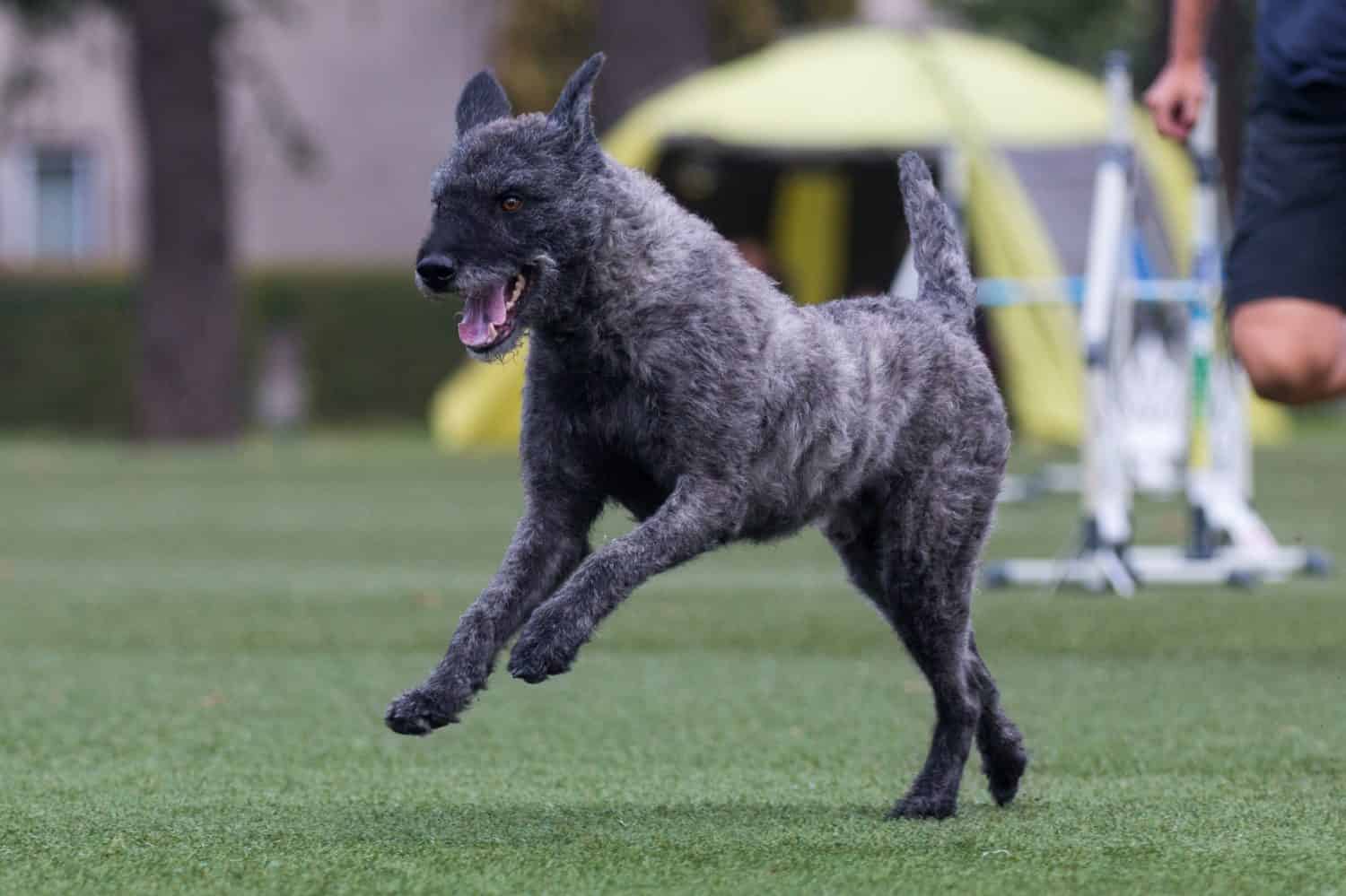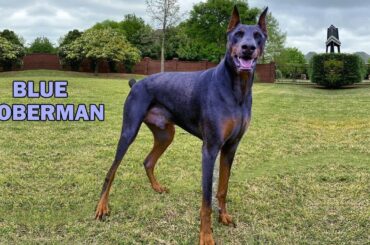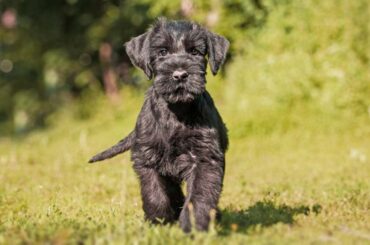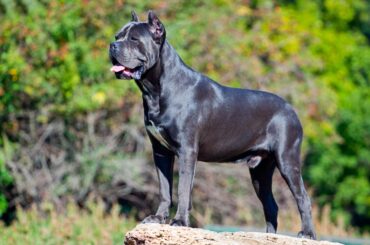Table of Contents
A Comprehensive Breed Analysis

The Blue Dutch Shepherd, a captivating and distinctive canine breed, stands out not only for its striking appearance but also for its remarkable intelligence and versatility. Characterized by a beautiful blue-gray coat and an energetic demeanor, these dogs have gained popularity among dog enthusiasts for their unique combination of elegance and utility. Originating from the Netherlands, the Blue Dutch Shepherd has a rich history rooted in herding and working alongside farmers.
In this comprehensive exploration, we delve into the world of Blue Dutch Shepherds, unraveling the threads of their history, dissecting the intricacies of their distinctive coat, and shedding light on their remarkable traits that make them not just companions but also skilled working dogs.
History
The Dutch Shepherd dog breed originated in the Netherlands and was developed to help herders tend to their sheep and other livestock. Often referred to as “Shepherd’s working dog,” they are skilled at doing every chore associated with farming. Farm life has become increasingly precarious over time, and Dutch shepherds have moved into apartments.
Blue Dutch Shepherd
The coat of the Dutch Shepherd is available in a variety of colors, one of which is a striking shade of blue. As this breed has emerged from the herding society, distinct brindle hues are frequent among the countryside breed dogs. Though they are uncommon, Blue Dutch Shepherd make wonderful watchdogs and other companions! Other shepherd breeds, such German shepherds and Malisons, are also prone to the shade blue. Now that you know that the blue is caused by a dilution gene, you may question how it happens. And that is how a blue puppy is obtained.
The Features of the Blue Dutch Shepherd’s Blue-Gray Coat
One characteristic that makes the Blue Dutch Shepherd stand out is its eye-catching, blue-gray coat. What makes their coat special are these main features:
Color Variation
The blue-gray coat is the hallmark of the Blue Dutch Shepherd, and it can range from a soft steel blue to a deeper charcoal gray. The coat color should be even throughout, with minimal variations or patches.
Texture
The coat has a medium length and is dense, providing protection from various weather conditions. The texture is typically harsh and straight, lying close to the body.
Undercoat
Blue Dutch Shepherds often have a dense undercoat that adds to their insulation. The undercoat contributes to the overall thickness of the coat, providing additional protection.
Guard Hairs
Guard hairs, which are longer and coarser than the undercoat, help repel water and dirt. These guard hairs contribute to the distinctive appearance of the breed.
Markings and Patterns
Blue Dutch Shepherd may have specific markings on their coat, such as a lighter mask on the face, a darker stripe down the back, or lighter shading on the legs and chest. The coat may exhibit a brindle pattern, where darker streaks or stripes appear against the lighter background.
The Genetics Behind the Blue Coloration
One interesting feature of a Blue Dutch Shepherd’s coat is its blue coloration, which is a result of certain genetic variables. The interaction of several genes that determine a dog’s coat color affects the genetics underlying the blue coloration. An outline of the Blue Dutch Shepherd’s blue color’s genetic foundation is provided below:
Dilution Gene (D)
The dilution gene, denoted by the symbol ‘D,’ is a crucial factor in determining coat color in dogs. The presence of the dilution gene leads to the dilution of the base color, resulting in a lighter shade. In the case of the Blue Dutch Shepherd, the dilution gene contributes to the dilution of the typical black color found in many Dutch Shepherds, resulting in the distinctive blue-gray coat.
Black Base Color (B)
The blue coloration is directly linked to the base color of the coat, which is black in the case of Blue Dutch Shepherds. The interaction between the dilution gene (D) and the black base color (B) produces the unique blue-gray hue.
Recessive Inheritance
The blue coloration is typically inherited in a recessive manner, meaning that both parents must carry and pass on the recessive dilution gene for the blue coat to manifest in their offspring. If a Blue Dutch Shepherd is bred with another dog carrying the dilution gene, there is a chance of producing puppies with the blue coat color.
Genetic Testing
Responsible breeders often use genetic testing to identify and understand the specific genes carried by their breeding dogs. Genetic testing helps ensure that breeding pairs are selected with the intention of producing healthy puppies with the desired coat color and other traits.

How the Coat May Change Over Time
As a Blue Dutch Shepherd reaches adulthood, its coat may alter noticeably from puppy-hood to maturity. Breeders and owners can both benefit from an understanding of these developments. This is a thorough examination of potential coat evolution:
- Puppy Coat: Blue Dutch Shepherd puppies often have a softer and lighter coat compared to adults. The blue-gray color may appear less intense during the early stages of life. Puppy coats are generally softer and fluffier. The texture may not fully represent the harshness and straightness of the adult coat.
- Juvenile Stage: As the Blue Dutch Shepherd enters the juvenile stage, the coat length begins to increase. It starts to take on a denser and more adult-like appearance. The blue-gray color may start to deepen, becoming more pronounced as the puppy matures.
- Adolescence to Adulthood: The coat continues to develop in density, reaching its adult thickness. Guard hairs become more prominent, contributing to the breed’s characteristic appearance. The blue-gray color reaches its full vibrancy and intensity during adulthood. The coat may achieve its definitive hue, which can range from a soft steel blue to a deeper charcoal gray. Any markings or patterns become more defined as the dog matures. This includes facial masks, stripes, or brindle patterns, if present in the individual.
- Seasonal Changes: Blue Dutch Shepherds are known to shed, and seasonal changes can impact the appearance of their coat. Shedding may vary, with heavier shedding occurring during specific times of the year. Regular grooming practices, including brushing, help maintain the vibrancy of the blue-gray color. Without proper grooming, the coat may appear dull or uneven.
Physical Characteristics of Blue Dutch Shepherd
- The average height and weight of a Blue Dutch Shepherd is around 20-30kg and the height for males tends to grow about 22 to 25 inches and males are larger than females. Female shepherds on average tend to grow around 21 to 24 inches.
- The Blue Dutch Shepherd has a well-proportioned and athletic build. The body is slightly longer than it is tall, giving the dog a rectangular appearance.
- The coat is one of the most distinctive features of the Blue Dutch Shepherd. It has a medium length, is dense, and has a harsh texture. The coat lies close to the body.
- The breed is characterized by a blue-gray coat, which can range from a soft steel blue to a deeper charcoal gray. Some Blue Dutch Shepherds may have specific markings or a brindle pattern, contributing to their unique appearance.
Temperament and Personality Traits of Blue Dutch Shepherd

Blue Dutch Shepherds are highly intelligent dogs, known for their quick learning and problem-solving abilities. Their sharp minds make them adept at various canine activities, including obedience training and agility. They form strong bonds with their owners and are known to be dedicated protectors.
Blue Dutch Shepherd thrive on physical and mental stimulation, making them well-suited for active individuals or families who enjoy outdoor activities. Due to their intelligence and eagerness to please, Blue Dutch Shepherds are highly trainable. Blue Dutch Shepherds are generally social dogs, enjoying the company of their family members.
With a strong protective instinct, Blue Dutch Shepherd make excellent watchdogs. They are vigilant and quick to alert their owners to any potential threats. Despite their working heritage, Blue Dutch Shepherds maintain a playful and fun-loving nature.
General Grooming Tips
Regular brushing, particularly in the spring, fall, and monsoon seasons, helps control shedding. Your Blue Dutch shepherd needs frequent brushing in addition to excellent hygiene. As needed, give your dog a bath, and remember to keep their nails clipped because they can cause irritation. Periodically cleaning your ears is also recommended.
A long-term healthy physique is guaranteed if you take good care of your beloved pet’s cleanliness from the beginning.
Lifespan and Health Considerations
Blue Dutch Shepherd has a long lifetime of 12-15 years; they are one of the healthiest dog breeds across the world. A balanced diet and proper care may guarantee your Dutch shepherd a long and happy life. Genetic issues are uncommon in this particular breed, but they can also be susceptible to hip and elbow dysplasia, cryptorchidism, dental issues and other allergies.
Conclusion
In conclusion, the Blue Dutch Shepherd stands as a captivating and versatile canine companion, renowned for its unique combination of intelligence, loyalty, and distinctive blue-gray coat. This breed, originating from the Netherlands, has a rich history as a herding and working dog, and its adaptability has made it a cherished member of many households worldwide.
The Blue Dutch Shepherd is not merely a pet; it is a devoted partner with a rich history and a promising future. Whether working on a farm, participating in canine sports, or simply being a loyal family member, the Blue Dutch Shepherd continues to capture hearts with its elegance, intelligence, and unwavering loyalty. As a testament to the breed’s enduring qualities, the Blue Dutch Shepherd remains a cherished and cherished member of the global canine community.
READ ALSO
- Blue German Shepherd: Understanding the Fascinating World of Blue German Shepherd
- Understanding the Appeal of Black German Shepherd: Bold and Beautiful
- The Enigmatic Beauty of Belgian Malinois Black: 4 Amazing Characteristics of Belgian Malinois Black
- Black Russian Terrier – 5 Best Known Facts and Personality Traits
- Black and White German Shepherd Dog – 5 Basic Body Characteristics, Behavior, Caring And Health
- Black Irish Setter Dog: Discovering the 4 Comprehensive Coal Beauty of the Setter Breed
- The Silver Belgian Tervuren Unique Appeal: Discovering the Beauty of Belgian Tervuren in Silver Hues
FAQs
What is a blue Dutch Shepherd?
Are blue shepherds rare?
Yes, blue German Shepherds are relatively rare. Unlike the traditional tan and black German Shepherds, the blue coat color is a less common genetic variation. This uniqueness contributes to their appeal among dog enthusiasts.
What breed is a blue shepherd?
Blue Bay Shepherds were created by breeding specifically bred wolf-dogs with old-style blue German Shepherds. They were aiming to get the wolf-like look, with all the trainability and loving personality of a German Shepherd — and the results have been stunning




